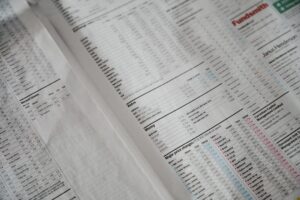Maximizing Profit Potential in the Tokyo Forex Session: A Guide for Traders
The foreign exchange (forex) market is open 24 hours a day, five days a week, allowing traders from all around the world to engage in currency trading at any time that suits them. However, not all trading sessions are created equal. Each session has its own unique characteristics and offers different opportunities for traders. In this article, we will focus on the Tokyo forex session and explore strategies to maximize profit potential during this time.
The Tokyo forex session, also known as the Asian session, starts at 12:00 AM GMT and closes at 9:00 AM GMT. It is the first major session to open after the weekend, making it an important session for setting the tone for the week ahead. The Tokyo session is known for its relatively low volatility compared to other sessions, such as the London or New York sessions. However, this does not mean that there are no opportunities for profit during this time.
One strategy that traders can employ during the Tokyo session is trading the yen crosses. The yen crosses are currency pairs that include the Japanese yen (JPY) as one of the currencies. Examples of yen crosses include USD/JPY, EUR/JPY, and GBP/JPY. The Tokyo session is the most active time for trading these pairs since it overlaps with the business hours in Japan.
To maximize profit potential when trading yen crosses, it is crucial to keep an eye on economic data releases from Japan. These releases can have a significant impact on the value of the yen and, consequently, on the yen crosses. Key economic indicators to watch include the Bank of Japan’s interest rate decisions, GDP growth, inflation data, and trade balance figures. By staying informed about these releases and understanding their potential impact, traders can make informed trading decisions during the Tokyo session.
Another strategy for maximizing profit potential in the Tokyo session is to take advantage of price levels and technical patterns. During this session, traders often observe price consolidation and ranging markets. This means that currency pairs may be trading within a relatively narrow range, presenting opportunities for range trading. Traders can look for support and resistance levels and trade the bounces within the range.
Additionally, traders can use technical indicators, such as moving averages, oscillators, and trend lines, to identify potential breakouts or trend reversals. Breakouts occur when the price breaks through a key resistance or support level, indicating a potential continuation of the trend. Trend reversals, on the other hand, occur when the price changes direction, signaling a potential shift in market sentiment. By combining technical analysis with price action, traders can identify profitable trading opportunities during the Tokyo session.
Risk management is a crucial aspect of maximizing profit potential in any trading session, including the Tokyo session. Traders should always set stop-loss orders to limit potential losses and take-profit orders to secure profits. It is also important to manage position sizes appropriately and avoid overtrading. By maintaining a disciplined approach to risk management, traders can protect their capital and increase their chances of long-term profitability.
In conclusion, while the Tokyo forex session may have lower volatility compared to other sessions, there are still ample opportunities for traders to maximize profit potential. By focusing on yen crosses, staying informed about economic data releases from Japan, utilizing technical analysis, and implementing effective risk management strategies, traders can make the most of the Tokyo session and increase their chances of success in the forex market.





